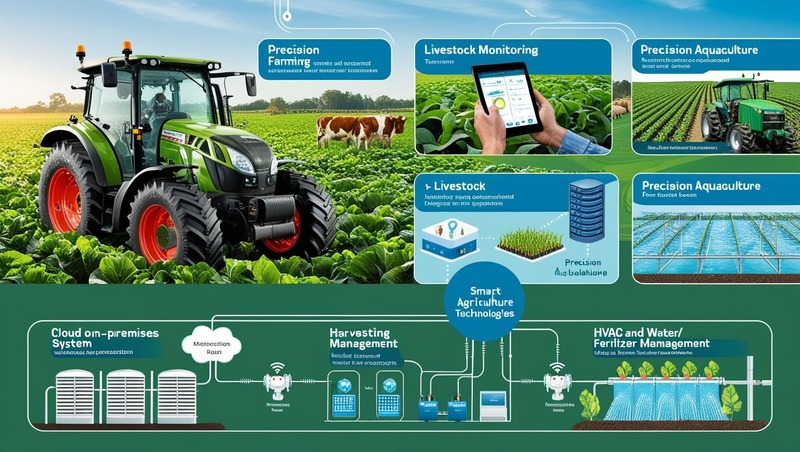The integration of Artificial Intelligence (AI) into agriculture is rapidly transforming traditional farming methods, giving rise to what is now known as smart agriculture. By leveraging machine learning, data analytics, and automation, AI technologies are driving innovation across the agricultural value chain—from crop monitoring to predictive analytics and autonomous equipment. This article explores the current market impact of AI in smart agriculture and offers insights into its promising future.
Download PDF Brochure @ https://www.marketsandmarkets.com/pdfdownloadNew.asp?id=239736790
Market Impact Analysis
- Enhancing Precision Farming
AI technologies have revolutionized precision farming by enabling data-driven decision-making. Satellite imaging, drone surveillance, and IoT sensors collect real-time data on soil conditions, weather patterns, and crop health. AI algorithms analyze this data to optimize irrigation, fertilization, and pest control, leading to increased crop yields and reduced resource wastage.
- Predictive Analytics and Crop Forecasting
AI-driven models are being used to forecast crop yields, predict pest infestations, and assess climate risks. These insights allow farmers to take proactive measures, reducing losses and improving planning and profitability. Companies are using AI to integrate historical data with real-time inputs for enhanced forecasting accuracy.
- Automated Equipment and Robotics
Smart tractors, robotic harvesters, and automated irrigation systems powered by AI are reducing the dependence on manual labor. These systems are programmed to perform repetitive and time-consuming tasks with high efficiency, enabling farmers to scale operations and manage large fields with fewer resources.
- Supply Chain Optimization
AI is helping streamline the agricultural supply chain by predicting demand, monitoring storage conditions, and improving logistics. Machine learning algorithms track market trends, enabling producers and distributors to make informed decisions regarding pricing and distribution.
- Livestock Health Monitoring
AI-powered wearable devices and sensors are being deployed to monitor livestock health in real time. By analyzing behavioral patterns and biometric data, these systems detect diseases early and alert farmers, reducing mortality rates and veterinary costs.
Market Size and Growth Trends
According to market research reports, the global smart agriculture market size is anticipated to grow from USD 14.40 billion in 2024 to USD 23.38 billion by 2029, expanding at a CAGR of 10.2% during the forecast period. The growth is primarily driven by:
- Increasing demand for food due to population growth
- Need for sustainable farming practices
- Rising adoption of smart farming technologies
- Government initiatives supporting AI in agriculture
North America currently dominates the market due to its strong technology infrastructure and large-scale farms, while Asia-Pacific is expected to witness the fastest growth due to increasing digitalization and government support in countries like India and China.
Future Outlook
- Integration with IoT and 5G
The convergence of AI with IoT and 5G connectivity will enhance the accuracy and speed of data transmission in real time, enabling more responsive farming systems. Edge AI will allow for faster, on-site decision-making without the need for cloud processing.
- AI-Driven Sustainable Agriculture
Future AI systems will focus heavily on environmental sustainability. From carbon footprint tracking to water conservation and organic farming optimization, AI will play a pivotal role in promoting eco-friendly agricultural practices.
- Expansion of Agri-Tech Startups
An increasing number of agri-tech startups are innovating AI-based solutions, from intelligent farm management systems to AI-enabled crop disease detection apps. This influx of innovation is expected to make AI tools more accessible to small and medium-sized farms.
- Policy and Ethical Considerations
As AI adoption in agriculture increases, data privacy, algorithm transparency, and equitable technology access will become important regulatory concerns. Governments and institutions will need to establish frameworks to ensure ethical use of AI in the sector.

